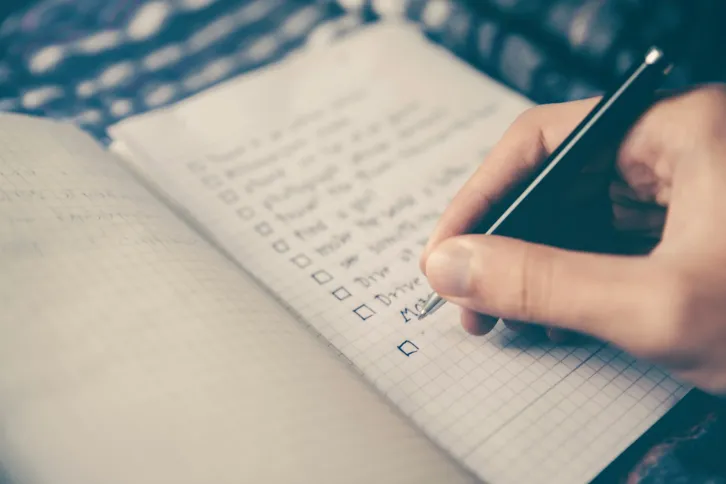Are you concerned about how to write a response paper? Before you dive into the peculiarities of the writing process and start working on the project, you should deal with the basics. Academic writing, irrespective of its type, form, and level, is a challenging process that requires profound knowledge, a deep understanding of the topic, and excellent analytical skills. Unfortunately, a considerable number of students give up the idea of creating a well-structured, relevant, and consistent paper right after the first failure. Instead, they take advantage of professional and reputable online platforms that can meet any “write my paper at reasonable cost” request. The experts know how to write the most extraordinary response paper and accomplish other types of projects.
Do you want to accept the challenge and work hard to improve your writing skills? Keep reading for more information on the peculiarities of the specific type of academic project. But, before you proceed to its specification, check out the definition.
A response paper, also known as a reaction or reflection essay, is considered to be the most subjective and personal form of academic writing. The aim of the paper is to emphasize the writer’s attitude towards the analyzed article or essay. No matter if you agree or disagree with the ideas specified in the text, you need to explain your stance. What are the main characteristics of a response paper to take into account?
- Attention to details
- Proper formatting
- Consistency of the ideas
- Excellent structure
Browsing the web, you will be able to find a comprehensive response paper example, which will guide you through the writing process and will help you achieve the desired result fast and stress-free. Highlight the most important aspects and single out effective writing instruments that will potentially contribute to the quality of your response paper.
How to Write a Response Paper: Key Steps to Success
Once you are aware of the basic features and characteristics of a response paper, you are ready to proceed to a detailed analysis of the paper structure, formatting, and critical writing aspects. What are the essential parts of the papers? How should it be structured? What is the purpose of the essay? Are there universal recommendations and guidelines on how to write a response paper? These are the most common questions students come across as they dive into the work on the assignment.
First of all, it is fundamental to notice that, similar to any other academic writing project, the goal of the project is to test the student’s knowledge and skills. The ability to analyze complex topics and draw reasonable conclusions is indispensable for learners, and a response paper writing is one of the most effective ways to test them.
Before you immerse yourself in the writing process, you need to get settled with the basics. Although most elements of the paper are universal and will have to be included in any essay, there might be slight changes depending on the type of response paper, its academic level, topic, and other peculiarities. Check out the table below to choose the type of paper that sticks to its specific requirements.
| Type of a response paper | Features |
| Personal response | Personal ideas, thoughts, opinions, and emotions about the analyzed text. The paper type presupposes personal engagement with the essay. |
| Critical response | Analysis, interpretation, and evaluation of the text are supposed to present a detailed critique. This type of response paper requires objective and analytical engagement with the essay. |
| Research-based response | Presentation of external sources supporting the claims. The writer should include detailed evidence from other scholarly articles, books, and interviews to keep the paper relevant. |
Now, it is time to proceed to the response paper outline creation. The process will not take much of your time but will help you come up with a relevant and meaningful paper much faster. Although the text will have to consist of the traditional introduction, main body, and conclusion, the body passage will need to be subdivided into two other sections. Thus, when it comes to a response paper, at least four paragraphs should be mentioned.
Introduction
Catchy, intriguing, appealing, and interesting introductory page is a must. It is the exact element that can help to get the reader’s attention and make them anticipate the content of the paper. The first paragraph of the response paper should introduce the topic of the essay and mention the analyzed work, its author, and key specifications without mentioning too many details. The overview of the topic with a concise thesis statement are the critical elements to be included.
Main Body
This is, undeniably, the biggest and most informative part of the response paper that should unveil the critical peculiarities of the analyzed work and its essential features. Relevant data taken from credible sources, logical presentation of information, zero inaccuracies and mistakes, combined with flawless formatting are the key requirements of the passage.
A Summary of the WorkWhen working on a response paper for the first part, it is indispensable to remember that the opening part of the body passage is about the analyzed work.
- Sum up the paper, identifying the author and title of the book or article.
- Create a short summary of the presented information.
- Highlight critical aspects to discuss.
- Quote some of the most appealing phrases to emphasize critical ideas.
- Keep the summary objective.
After a quick analysis of the original work, you are ready to develop the second part of the body passage, introducing your ideas on the topic. This element of the response paper is the most prominent one, as it helps to evaluate the writer’s ability to analyze information and come up with accurate and reasonable conclusions. Emphasize your attitude towards the topic of the paper and highlight the crucial ideas.
Conclusion
Finally, when all the objective and subjective ideas are presented, it is indispensable to wind up. A concluding part of the response paper should not take more than 10-20% of the whole text and should be concise, informative, and interesting. Do not include new information, but rather reiterate the thesis statement and draw certain conclusions from the data analyzed in previous passages. Keep the text well-structured, which may contribute to the quality and efficiency of your response paper.
How to Start a Response Essay: Pre-Writing Stage to Deal with
Similar to any other type of academic writing, response paper creation presupposes a few stages of work. Deep analysis of the topic, presentation of the academic work to discuss, profound research, and reasonable conclusions are the critical elements to deal with. The prominence of the pre-writing stage can hardly be overestimated, as it is the exact element that sets the tone of the whole paper and influences its relevance.
Do you have a little idea of how to write a response paper? Then, there are two options to consider. The first one is appreciated by busy students who have to combine studying with a plethora of other activities. With the advancement of technology and the accessibility of various platforms, getting professional help with the most challenging college projects has become exceptionally easy. There is a plethora of companies that provide learners with an opportunity to pay to write an essay. By choosing this solution, you do not have to worry about the quality, structure, content, or formatting of your response paper, as real experts will do their best to meet all your requirements and deliver the best essay.
If you consider the assistance of pro writers to be helpful in unique cases, you should choose the second option and start working hard on your writing skills. Are you ready to accept the challenge and come up with an impeccable response paper? Here are the first two undertakings you will have to cope with.
Create an Influential Thesis Statement
Deep analysis of the original text, its key ideas, and concepts is a must. It will help you come up with a meaningful and persuasive thesis statement. What should a thesis statement of a response paper look like?
- It should be clear and concise
- It should provide direction for the paper
- It should be based on the analysis of the essay
- It should reflect your attitude toward the text
Working on this part of the introduction, you need to mind a central argument of the text and your personal perspective on it. Write down some examples and evidence to support your ideas further in the paper.
Develop an Outline
A well-organized outline is the best way to ace a response paper perfection. Due attention to key aspects, arguments, and evidence helps to discuss the subject matter and keep the ideas structured. The outline is a quick plan of work that consists of the key paragraphs and their main points. Do not include too much information, but rather emphasize the critical details that should be mentioned in certain passages.
Response Paper Format: Effective Ways to Keep the Paper Concise and Influential
Understanding the basics of the response paper format and the peculiarities of its writing process, you are ready to proceed to the major part of the work. There are a few other elements of the text to deal with, including the introduction, main body, and conclusion. Use a created outline as a roadmap to the response paper writing and enjoy a flawless result.
Introductory Part
Working on the introduction, you will face a lot of challenges. First of all, the passage is quite short and concise and should not take more than 10-20% of the whole paper. Secondly, it should contain relevant background information, a presentation of the essay topic, and its key peculiarities. Thirdly, it should emphasize the writer’s attitude towards the subject matter. Fortunately, if you have been attentive to reading guidelines on how to write a response paper, you will have problems with none of these elements.
Main Body
Following the paper outline, you will have an opportunity to enjoy a logical flow of thoughts, coherence, and focus, which will advance your essay to a new level. Divide the body passage into numerous paragraphs, each introducing a specific aspect of the topic. Check out a few tips that will make the response paper sound more influential and appealing.
- Use examples and evidence from the original text.
- Analyze, discuss, and interpret the text.
- Emphasize your perspective on the topic clearly.
- Address counterarguments and explain them.
Conclusion
The concluding part of the response paper consolidates all your ideas, arguments, and reactions mentioned in the text. There is always a chance to get help with the research paper conclusion creation, as it is the only way to succeed fast and effortlessly. Nonetheless, if you are ready to spend some extra time summing up the points discussed in the paper, you will be able to create an influential and effective response paper conclusion. Make sure you do not include any new information but only reiterate the thesis statement and the facts the readers are aware of.
Response Paper Example for Inspiration
Analyzing all the information mentioned above, even the most inexperienced students will have a chance to succeed with the response paper writing. At this point, it is indispensable to mention that the topic of the essay and some of its peculiarities may vary a lot, depending on the academic level of the assignment, college requirements, and individual preferences. However, browsing the web, you will have a chance to come across an unlimited number of sample essays that will not only provide you with effective tips on how to start a response essay but will guide you through the whole writing process. Check out a quick example of the paper outline that may help you thrive with your custom project.
- Introduction
- Hook sentence
- Background information
- Thesis statement
- Summary of the analyzed paper
- Topic sentence for the paragraph
- Information about the author
- Quick overview of the text
- Reaction
- Topic sentence for the reaction part
- Analysis of certain subject matters
- Comparison of the analyzed ideas with the up-to-date life
- Drawing conclusions
- Conclusion
- Reiteration of thesis statement
- Summary of the presented data
- Motivational sentence
Response paper is an academic paper characterized by maximum flexibility and creativity. Therefore, if you want to stick to a certain strict structure, chances are you will fail. Instead, while working on the assignment, it is indispensable to follow the pattern, but be free to try to adjust certain ideas and concepts to the topic and type of your custom response paper.
Stick to the general guidelines and follow the recommendations of experienced students to make sure you succeed with the project fast and without much effort. Mind the structure and formatting of the paper that are critical. Check out the basics on how to start a response essay and thrive with it to enhance your chances of success.
FAQ
-
What is a response paper?
-
What are the types of the response papers?
-
What are the key parts of the response paper to be included?
-
How do you succeed with the response paper writing?







Comments (0)
Thank you for your comment! 🌟
It has been submitted and is awaiting moderation. Stay tuned—it will be visible soon!